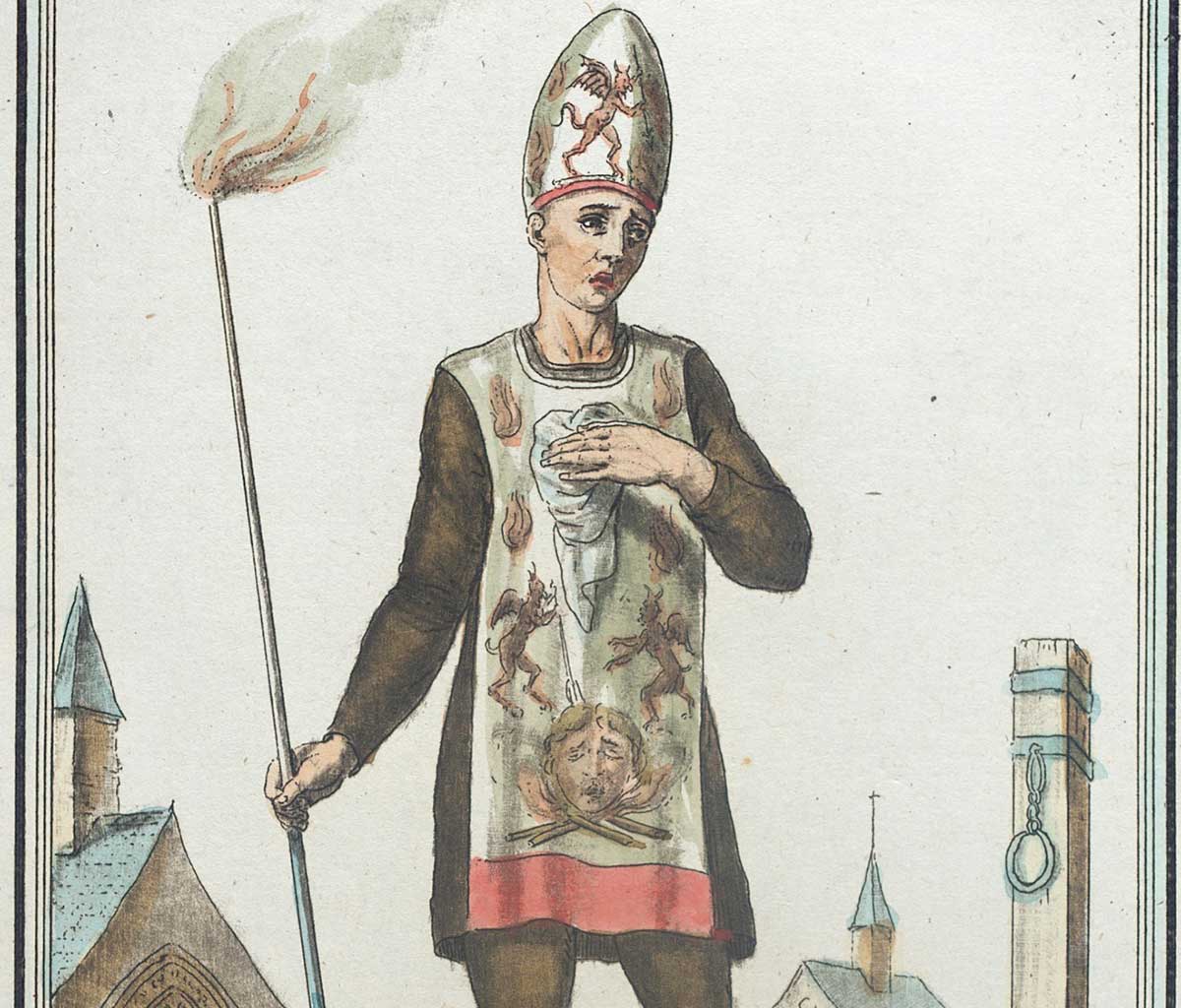The creepy/cool robes that heretics were forced to wear during the Spanish Inquisition

Catholic church leaders took cruel delight in humiliating heretics during the Spanish Inquisition (15th - 18th century). Between 3,000 and 5,000 people were executed for various crimes against the Church, such as being a crypto-Jew, practicing Freemasonry, sodomy, and witchcraft. The most severe punishment was being burned alive at the stake. Lesser punishments included whippings and being sentenced to slavery as oarsmen in royal galleys.
Heretics were made to wear tunics to shame an disgrace them. The illustrations on the tunics look like something you might see on an Ed Hardy douchebag shirt. From Wikipedia:
Here are some other illustrations of the garments: 1 2 3 4These were the Samarra, Fuego revolto, and the Sambenito. The Samarra was used by those condemned to death, frequently through the burning at the stake; it featured painted dragons, devils, and flames amongst which the image of the prisoner could be distinguished. The Fuego revolto was used for those who had repented. The flames would be painted downwards, thus indicating that they had escaped death through fire. Finally there was the Sambenito used commonly by those in penitence and which featured the saltires, eventually became known to designate all three types.
The tunic of yellow cloth often reached down to the knees of the wearer, with figures of monks, dragons, and demons in the act of augmenting flames, signifying that the heretic is impenitent and is condemned to burn at the stake. If an impenitent is converted just before the procession, then the sanbenito is painted with the flames downward, which is called fuego repolto, and it means that the heretic is not to be burnt alive at the stake, but to have the mercy of being strangled before the fire is lit.
The third type of penitential garment was for those who repented before they were sentenced. It was a simple yellow scapular with a red cross, and a conical cap, denominated coroza (and capirote), which was formed of the same material as the sanbenito, and decorated with similar crosses but no paintings, figures, or flames, and the wearer is only to do penance.
The heretics, found guilty by the inquisitors, had to walk in the procession wearing the sambenito as a Shirt of Flame, the coroza, the rope around the neck, and in their hands a yellow wax candle. Other garments worn by the prisoners included pointed hats, rosaries, and green or yellow candles.
Ki(C)szitette: Jacques Grasset de Saint-Sauveur (France, 1757-1810), Labrousse (France, Bordeaux, active late 18th century) - Image: http://collections.lacma.org/sites/default/files/remote_images/piction/ma-31861671-O3.jpgGallery: http://collections.lacma.org/node/208416, Kizkincs, Hivatkozis